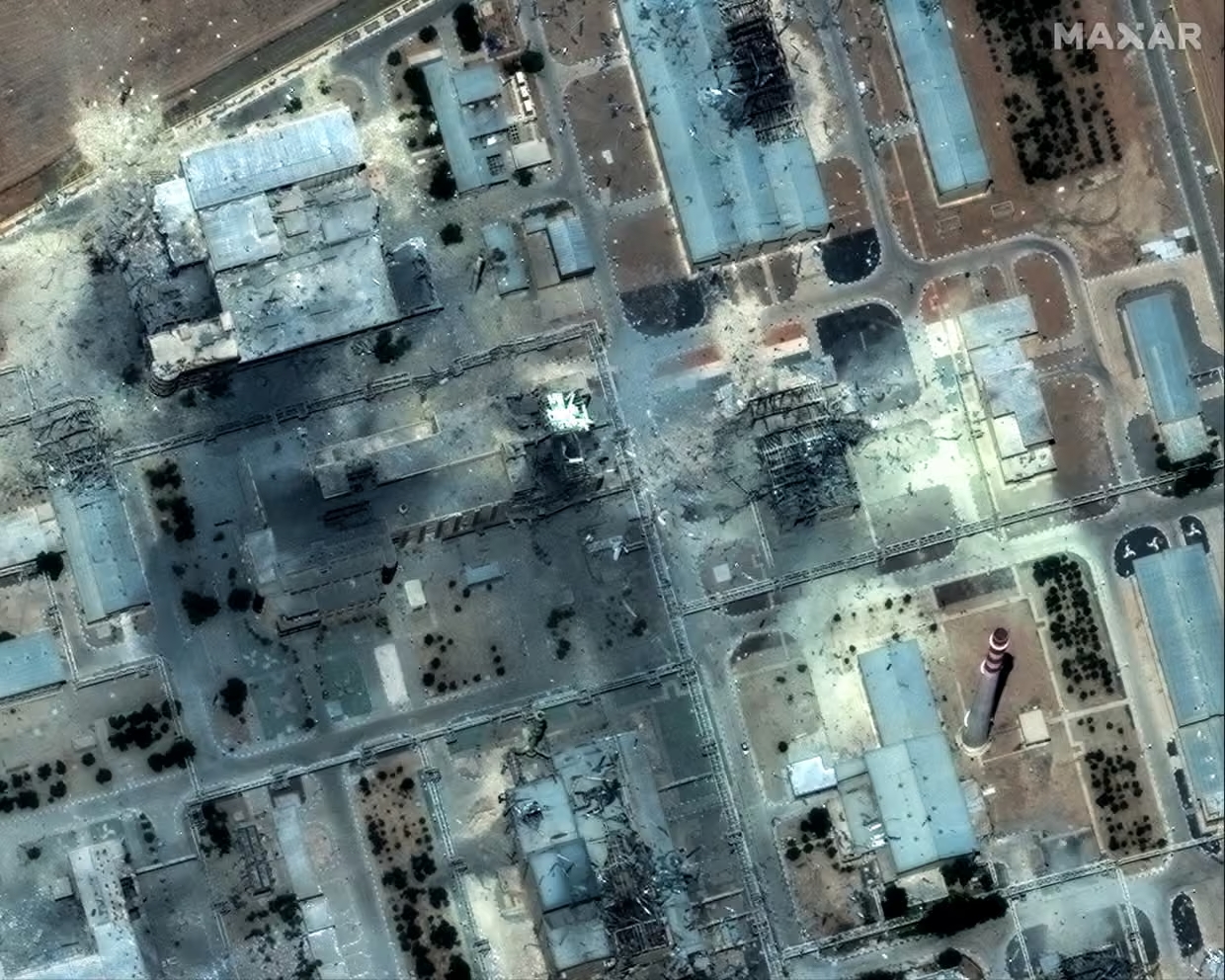Attacking Iran’s nuclear facilities showed the pragmatism of U.S. foreign policy. The airstrikes were neither purely isolationist nor ideologically preemptive. Instead, they were a calibrated, interest-driven move to neutralize a threat while avoiding overcommitment.

Destroyed buildings at Isfahan nuclear technology centre after it was hit by US airstrikes on 22 June, 2025. (Photograph: Maxar Technologies/Reuters)
The recent U.S. airstrikes on Iran’s nuclear facilities reignited debate over the nature of Donald Trump’s foreign policy. While critics often label his approach as isolationist, the strikes actually reveal a more pragmatic strategy — a realistic foreign policy that aims at tangible security gains rather than ideological commitments or multilateral diplomacy. By analyzing the decision-making and implementation of the bombings, one can see clearly that Trump’s actions reflect a calculation that combines preemptive force with selective disengagement to serve core U.S. interests.
First, Trump’s airstrikes were based more on mitigating threats than on ideological commitment. The decision to bomb Iran’s nuclear facilities was framed as a necessary response to an imminent threat. The goal was not regime change or democratization. In his televised address after the strikes, Trump said the objective was to end “the nuclear threat posed by the world’s No. 1 state sponsor of terror.” The administration emphasized intelligence showing Iran’s rapid uranium enrichment to near weapons-grade, and its refusal to halt proliferation despite diplomatic overtures, even though the director of national intelligence, Tulsi Gabbard, testified in March that Iran wasn’t building a nuclear weapon. This aligns with realist principles: When a rival state’s capabilities threaten national security, preemptive action is seen as justified to restore deterrence. Unlike past neoconservative interventions that sought to remake the Middle East, the goal of Trump’s strikes was simply to degrade Iran’s nuclear program, not prolonged occupation or regime change.
Such realism is further evidenced in Trump’s selective multilateralism. While he bypassed the United Nations and NATO, he coordinated with Israel, a key regional ally whose intelligence and military cooperation were critical to the operation’s success — in contrast with pure isolationism (avoiding all foreign intervention) and liberal internationalism (seeking broad international consensus before striking). In a CNN interview in November, Brian Hook, the State Department’s special envoy for Iran in Trump’s first term, explicitly stated that the U.S. had “no interest in regime change,” and was focusing instead on crippling Iran’s ability to threaten U.S. allies and energy markets.
Second, Trump tried hard to match his realism with his isolationist rhetoric. His policy defies binary labels. While Trump withdrew from the Iran nuclear deal (the Joint Comprehensive Plan of Action, or JCPOA) and rejected multilateral sanctions, which critics called isolationist, he replaced them with unilateral economic pressure and targeted military strikes.
This mixed approach reflects realist thinking: Multilateralism is abandoned when it limits U.S. power, but force is used decisively when it is to the U.S. advantage. The strikes were designed to avoid triggering a wider war, for example, by not attacking Iran’s leadership or non-nuclear infrastructure. Restraint was exercised to preserve U.S. leverage without overdoing it.
Domestically, this realism led to tension within Trump’s base. Isolationists such as Steve Bannon, Trump’s former aide and a leader of the MAGA movement, and Georgia Representative Marjorie Taylor Greene have condemned the strikes as a betrayal of the “America first” principle. They fear the U.S. might become entangled again in Middle East quagmires. Hawks such as Senator Lindsey Graham of South Carolina praised the strikes as essential for deterrence. Again, Trump managed such divisions by limiting the operation’s scope in an attempt to balance realist action with isolationist rhetoric. His rejection of negotiators’ proposal to allow limited Iranian enrichment — which could be seen as a diplomatic compromise — showed a preference for coercion over concessions.
Third, Trump’s move alarmed international partners and competitors alike. The backlash, particularly from China and Russia, underscored the costs of Trump’s realism. China strongly condemned the airstrikes on Iran’s nuclear facilities, emphasizing that the actions violated international law and exacerbated tensions in the Middle East. Russia exploited the chaos to position itself as an alternative mediator.
Trump’s team seemed willing to absorb these criticisms, focusing more on the operational effectiveness of the strikes. They also believed the strikes sent an obvious signal to both partners and adversaries that the U.S. is trustworthy in safeguarding security and is willing to act unilaterally against the threat of weapons of mass destruction when necessary. This is truly a realist message of deterrence.
Economically, the strikes risked oil market disruptions but avoided catastrophic escalation. As analyzed by CNN, there were several ways that Iran could respond to the U.S. attacks, including hitting military installations in the region, disrupting the global oil trade by closing the Strait of Hormuz and accelerating its effort to build a nuclear bomb. However, by targeting only nuclear sites, Trump minimized collateral damage that could provoke Iranian retaliation against oil shipments or U.S. bases. This precision reflects a realist cost-benefit analysis: achieving security objectives without triggering uncontrollable fallout.
To sum up, the bombings of Iran’s nuclear facilities reveal the pragmatism of Trump’s foreign policy. They were neither purely isolationist nor ideologically preemptive. Instead, they were a calibrated, interest-driven move to neutralize a threat while avoiding overcommitment. Trump’s willingness to defy international norms, exploit alliances selectively and absorb domestic dissent shows a leader who prioritizes outcomes over rules. Trump’s presidency marks a departure from decades of U.S. foreign policy orthodoxy, using unpredictability and unilateral action to secure real gains. As global tensions shift, his legacy may be defined by this unapologetic realism — the belief that in a dangerous world, America’s security must come first, even at the expense of diplomatic niceties or ideological consistency.
